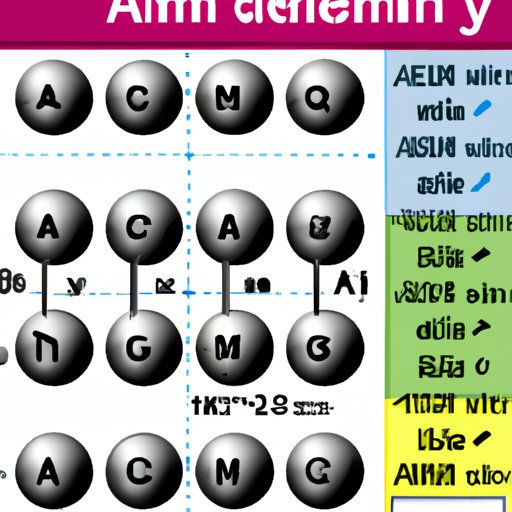Exploring the Density of Aluminum
The density of an object or material is a measure of its mass per unit volume. It is often expressed in kilograms per cubic meter (kg/m3) or grams per milliliter (g/mL). In order for an object to have a density, it must first have a mass and a volume. The concept of density is used to compare different materials, as well as to determine the weight of an object.
Types of Densities
Densities can be divided into two categories: absolute density and relative density. Absolute density is the mass of a material per unit volume. Relative density is the ratio of the density of a material to the density of a reference material, usually water. Relative density is also known as specific gravity.

How to Calculate Density
The density of an object or material can be calculated using the following formula:
Density = Mass / Volume

How to Calculate the Density of Aluminum
The density of aluminum can be calculated by first determining its mass and volume. Aluminum has a density of 2.7 g/cm3, so the mass can be determined by multiplying the volume by the density. For example, if the volume of aluminum is 10 cm3, the mass would be 27 g (10 cm3 x 2.7 g/cm3 = 27 g).
What Factors Affect the Density of Aluminum?
The density of aluminum is affected by several factors, including temperature, pressure, and alloy composition. As temperature increases, the density of aluminum decreases. Pressure also affects the density of aluminum, with higher pressures resulting in higher densities. The alloy composition of aluminum can also affect its density, as different alloys have different densities.

Understanding the Density of Aluminum
Aluminum is one of the most common elements found on Earth. It is lightweight, durable, and corrosion-resistant, making it an ideal material for many applications. Knowing the density of aluminum is important for calculating the weight of objects made from aluminum, as well as for comparing different alloys of aluminum.
What is the Density of Aluminum?
The density of aluminum is 2.7 g/cm3, or 2700 kg/m3. This means that one cubic centimeter of aluminum has a mass of 2.7 grams, and one cubic meter of aluminum has a mass of 2700 kilograms.
Why is the Density of Aluminum Important?
The density of aluminum is important for a variety of reasons. It helps engineers and scientists determine the weight of objects made from aluminum, as well as compare different alloys of aluminum. Knowing the density of aluminum can also help engineers design lighter structures that can still support the desired amount of weight.
The Science Behind the Density of Aluminum
The density of aluminum is determined by its atomic structure and physical properties. Aluminum is composed of aluminum atoms, which are held together by metallic bonds. These atoms have a relatively low atomic mass, which contributes to the low density of aluminum. Additionally, aluminum is a malleable metal, meaning it can be easily shaped and formed. This allows engineers to create lighter structures that still maintain their strength.
Conclusion
The density of aluminum is an important factor to consider when designing objects and structures made from aluminum. Knowing the density of aluminum helps engineers and scientists determine the weight of objects made from aluminum, as well as compare different alloys of aluminum. The density of aluminum is determined by its atomic structure and physical properties, such as its low atomic mass and malleability. By understanding the density of aluminum, engineers can design lighter structures that still support the desired amount of weight.

